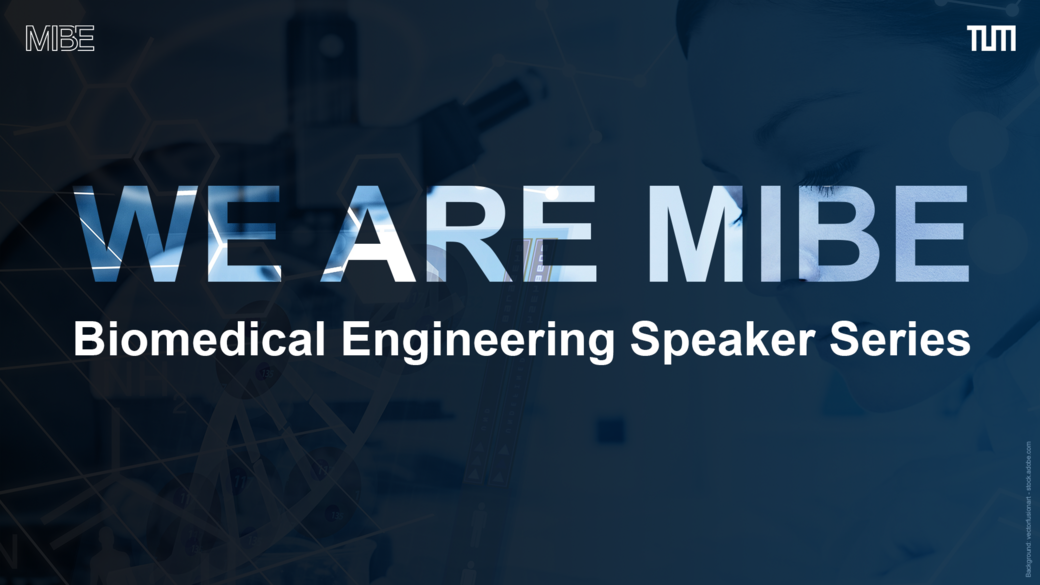In dieser Vortragsreihe geben pro Termin zwei Principal Investigators (PIs) des MIBE spannende Einblicke in ihre Forschung. Im Anschluss an die etwa 25-minütigen Vorträge gibt es Gelegenheit zum Austausch und Netzwerken vor Ort.
Prof. Dr. Thomas Misgeld: Mitochondrial diversity and plasticity in the healthy and inflamed nervous system
Prof. Dr. Arthur Konnerth: Imaging synapses in the living brain
Datum und Uhrzeit: Mittwoch, 10.01.2024, 16:15 – ca. 17:15 Uhr, anschließendes Networking
Ort: MIBE Hörsaal (Raum E.126), Boltzmannstraße 11, 85748 Garching und Zoom
Über die Vortragenden
Prof. Thomas Misgeld

Prof. Misgeld ist Neurobiologe und beschäftigt sich mit der Frage, welche Mechanismen zur Degeneration von Axonen und Synapsen bei neurologischen Erkrankungen und während der normalen Hirnentwicklung beitragen. Methodisch bedient sich seine Arbeitsgruppe der In-vivo-Mikroskopie im peripheren und zentralen Nervensystem von Mäusen und Zebrafischen.
"Besser mit MS leben" - TUMcampus (2023/1)
"Immunzellen greifen Synapsen an" - Pressemitteilung (2021)
Bild: DZNE / Frommann
Prof. Arthur Konnerth

Prof. Konnerth erforscht elementare Prozesse der Hirnfunktion. Mit Hilfe von elektrophysiologischen, bildgebenden und zellbiologischen Methoden untersucht er schwerpunktmäßig synaptische Interaktionen neuronaler Netze, um ein besseres Verständnis der Grundlagen von Lernen und Gedächtnis zu erlangen. Ein weiteres wichtiges Ziel ist die Aufklärung neuronaler Störungen bei der Alzheimer’schen Erkrankung.
"Direct toxic action of beta-amyloid identified" - Pressemitteilung (2019)
Bild: Andreas Heddergott / TUM
Zu den Vortragsthemen
Mitochondrial diversity and plasticity in the healthy and inflamed nervous system
In this talk, Thomas Misgeld will discuss the mechanisms of mitochondrial homeostasis and the changes that mitochondria undergo in the inflamed nervous system. Changes in mitochondrial structure and dynamics are an early sign of axonal injury in multiple sclerosis and its animal models. Together with their colleagues, the Misgeld lab has developed a range of in vivo imaging and omics tools that allow the visualization and profiling of mitochondria that exist within neuroinflammatory CNS lesions. This talk will focus on changes in the bioenergetic status of axons and their mitochondria and the underlying alterations in key metabolic pathways.
Imaging synapses in the living brain
The monitoring of the function and structure of single synapses in the intact living brain tissue was pioneered by Connor and colleagues, who used CCD cameras for the imaging of strongly activated single synapses on CA3 neurons in guinea pig hippocampal slices. During the following years, spine calcium imaging with improved sensitivity and better spatiotemporal resolution in brain slices relied on confocal or two-photon microscopy. The first in vivo two-photon calcium imaging recordings of single synaptic inputs were performed in mouse visual and auditory cortices, and were based on detection of calcium entry through NMDA receptor channels located in dendritic spines. A limitation of calcium imaging when recording single spine synaptic events is the ambiguity resulting from calcium signaling evoked by back-propagating action potentials. This problem is avoided when imaging extracellularly released glutamate. An advanced method of two-photon fluorometric glutamate imaging with single synapse resolution on vivo was recently published.
In my presentation, I will report progress on the use of two-photon glutamate imaging for the characterization of thalamocortical synapses to layer 4 neurons in the mouse visual cortex in vivo. In these recordings, we identified fundamental properties of thalamocortical synapses to layer 4 neurons, each of which represents individual upstream lateral geniculate nucleus neurons with characteristic receptive fields. Overall, our results validate on the single synapse level some of the basic aspects of the Hubel and Wiesel theory on orientation-selectivity in mammalian visual cortex neurons and add information on unexpected and unique mechanisms of thalamocortical synapses.
Weitere Informationen
Livestream
Die Veranstaltung wird über Zoom gestreamt: https://tum-conf.zoom.us/j/612 2888 8412 Passcode: waMIBE
Anerkennung Qualifizierungsprogramm Promovierende
Bei fachlicher Eignung kann die regelmäßige Teilnahme an den Vorträgen als Fachspezifische Qualifizierung angerechnet werden.
Registrierungsformular für Promovierende
Weitere Termine dieser Reihe im Wintersemester 2023/24
Die nächsten We are MIBE Vorträge finden an folgenden Terminen jeweils Mittwoch um 16:15 Uhr statt:
- 7. Februar 2024 Prof. Ruth Müller & Prof. Marcello Ienca
- 28. Februar 2024 Prof. Vasilis Ntziachristos & Prof. Franz Pfeiffer
